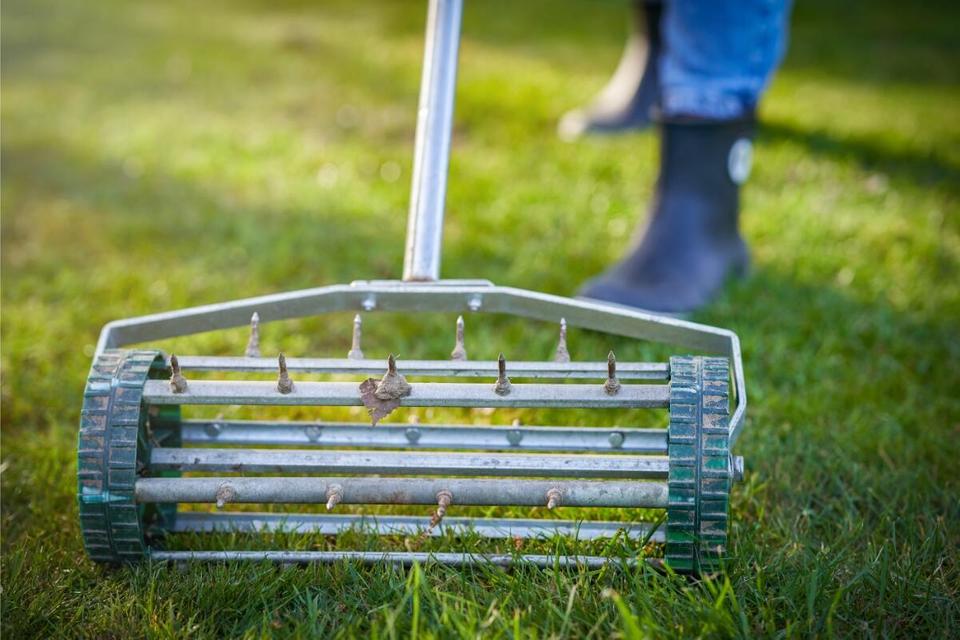As a devoted lawn owner, you surely want your grass to be as lush and green as can be. You water regularly, apply fertilizer when needed, and ensure you’re mowing high – but there’s an often overlooked step that can take your lawn’s health to the next level. Aeration is a key process that improves drainage, allows for better nutrient and water uptake, and leads to a thick, beautiful yard that anyone would envy.
By allowing your soil to breathe, you’re setting your grass up for optimal growing conditions. In this post, we will discuss the benefits of aeration, when the best times are to aerate, and how to go about the process yourself so you can develop an oasis-like space to enjoy all season.
The Multilayered Role of Aeration in Lawn Maintenance
To truly appreciate aeration, it is important to understand it beyond a mere gardening chore. Aeration is essentially a breath of fresh air for your lawn, a process that enables your grass to maximize its vitality and showcase its beauty. Seen superficially, it may seem like a simple task of punching some holes in the ground. However, the benefits and roles that aeration plays in the realm of lawn maintenance are significant and multifaceted.
Combatting Thatch Build-up
Aeration plays a significant role in managing thatch in your lawn. Thatch is a layer of dead and living grass shoots, roots, and stems that build up between the green vegetation and the soil surface. When this layer becomes too thick, it prevents water, nutrients, and oxygen from reaching the soil. Regular aeration helps to break through this layer, allowing these essential elements to penetrate the soil and reach the roots.
Enhancing Fertilizer Uptake and Use
A well-aerated lawn allows for the efficient use of applied fertilizers. By creating pathways through the soil, aeration ensures that the fertilizers reach the root zone where they can be most beneficial rather than simply sitting on the surface. This results in healthier, greener grass that is better able to resist disease and pest invasions.
Increasing Tolerance to Heat and Drought Stress
Lawn aeration helps to improve the overall health and hardiness of the grass, increasing its tolerance to heat and drought conditions. The process allows the roots to grow deeper into the soil, accessing more moisture reserves and making the lawn more resistant during dry, hot periods.
Encouraging Beneficial Earthworm Activity
Aerating your lawn encourages the activity of earthworms, nature’s soil aerators. These beneficial creatures digest organic matter, turning it into rich, fertile humus. Their burrowing activities naturally aerate the soil, improving its structure and fertility.
Boosting Seed Germination
If you’re overseeding, aeration is especially valuable. By creating small holes in the soil, aeration gives the seeds a protective, fertile spot to germinate. This increases the likelihood of successful grass establishment, leading to a denser, more lush lawn.
Reducing Soil Compaction
Lastly, lawn aeration is a powerful tool against soil compaction. Compacted soils are tough for roots to penetrate, limiting the amount of water, air, and nutrients they can access. Aeration breaks up compacted soils, promoting healthier, stronger root development.
Facilitating Efficient Water Usage
Aerating your lawn helps in efficient water usage. By breaking up compacted soil, more water is able to penetrate down into the grassroots instead of simply running off the lawn’s surface. This can result in a notable reduction in your water bill, thus making aeration an eco-friendly and cost-effective practice.
Promoting Disease Resistance
Through the enhanced uptake of water and nutrients, aeration boosts the overall health of your lawn. A healthy lawn is a resilient one, better equipped to resist diseases and pests. This means you’ll spend less time, energy, and resources battling these common lawn problems.
Offering Restoration Opportunities
Aeration can play a crucial role in restoring worn-out or heavily trafficked lawns. By loosening the soil and improving the flow of essential elements, worn patches can be revitalized and transformed into a thriving, green lawn once again.

Best Aeration Techniques for Your Lawn
With the multifaceted benefits of aeration now apparent, we can delve into the techniques you can employ to reap these advantages. Each technique has been designed to suit different types of lawns and conditions, allowing you to choose the most effective method for your unique yard.
Spike Aeration
The spike aeration technique involves puncturing the soil with a solid spike aerator. This can be as simple as a garden fork or as complex as a machine specifically designed for the task. While spike aeration relieves minor compaction and improves water infiltration, it should not be used on heavily compacted soils as it can cause further compaction.
Plug Aeration
Plug or core aeration is a technique that removes small plugs or cores of soil and thatch from the lawn. This method is particularly useful for lawns that are heavily compacted or have a significant thatch build-up. The removal of plugs in the lawn allows water, air, and nutrients to reach the root zone more effectively and promotes the breakdown of thatch.
Liquid Aeration
Liquid aeration is a relatively new technique that involves spraying a solution onto the lawn that, when watered in, helps to break up compacted soil on a microscopic level. Liquid aeration is a good choice for maintaining an already healthy lawn but may not be as effective for heavily compacted soils or significant thatch build-up.
Compost Topdressing
Compost topdressing, while not a traditional aeration technique, can be highly beneficial when combined with core aeration. Following the removal of soil plugs during core aeration, a thin layer of compost can be spread across the lawn. The compost fills in the holes, adding organic matter directly to the soil profile, enhancing soil structure and promoting beneficial microbial activity.
Mechanical Aeration
Mechanical aeration is a technique best suited for larger lawns or those with severe compaction issues. A mechanical aerator is a machine that removes plugs of soil from the lawn. It is similar to plug aeration but on a larger scale. Mechanical aerators can be rented or purchased, and for many homeowners, this is the most effective method of aeration.
Rolling Lawn Aeration
Rolling lawn aeration is another method to consider, particularly for uneven lawns. A lawn roller aerator is a device that has spikes on its surface and can be filled with water to increase its weight. When rolled over the lawn, it creates holes in the soil, helping to alleviate compaction and improve water, air, and nutrient penetration.
In Summary
Lawn aeration is an essential practice for maintaining healthy, beautiful lawns. It improves soil structure and fertility, increases tolerance to heat and drought stress, strengthens roots, reduces compaction, and promotes disease resistance. By choosing the right aeration technique for your particular lawn and conditions, you can effectively enhance its vitality and enjoy all the benefits of a lush green yard. Contact lawn aeration experts by clicking here and start improving your lawn’s vitality.
MOOWY lawn care offers a comprehensive solution for maintaining a lush and healthy lawn. With a focus on simplicity and effectiveness, MOOWY provides a range of products designed to meet the needs of lawn enthusiasts of all levels. From innovative fertilizers to specialized seed blends, MOOWY’s lawn care products are formulated with quality ingredients to deliver superior results. Whether you’re looking to repair patches, control weeds, or promote growth, MOOWY has you covered. With MOOWY, achieving a beautiful lawn has never been easier or more rewarding.






